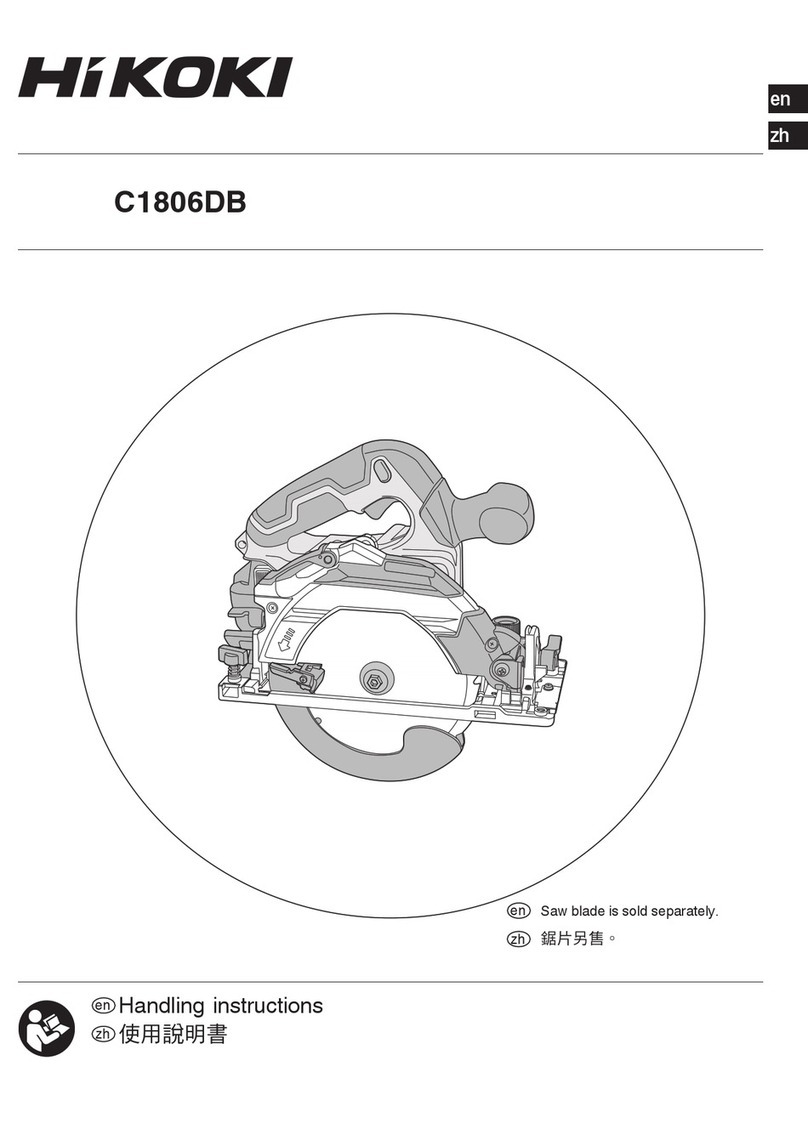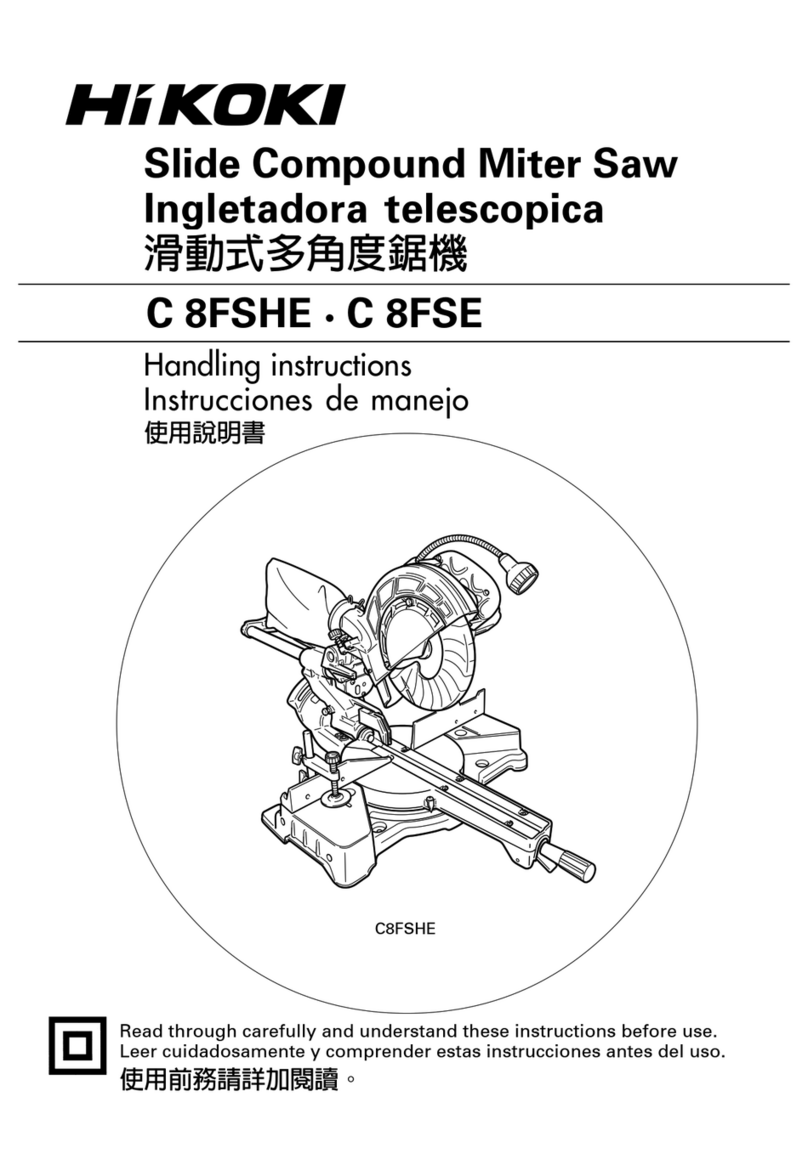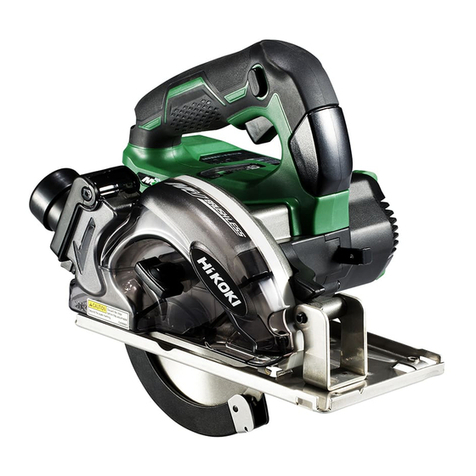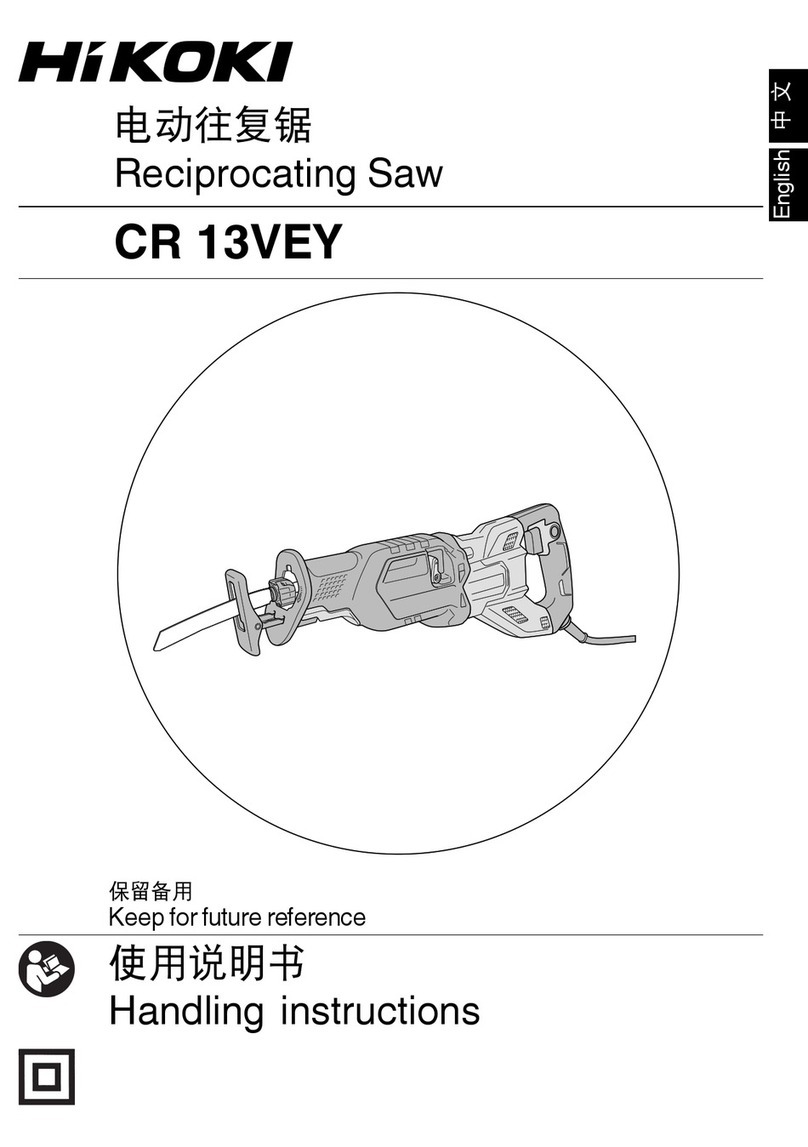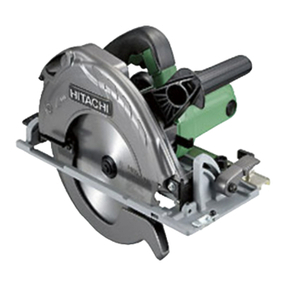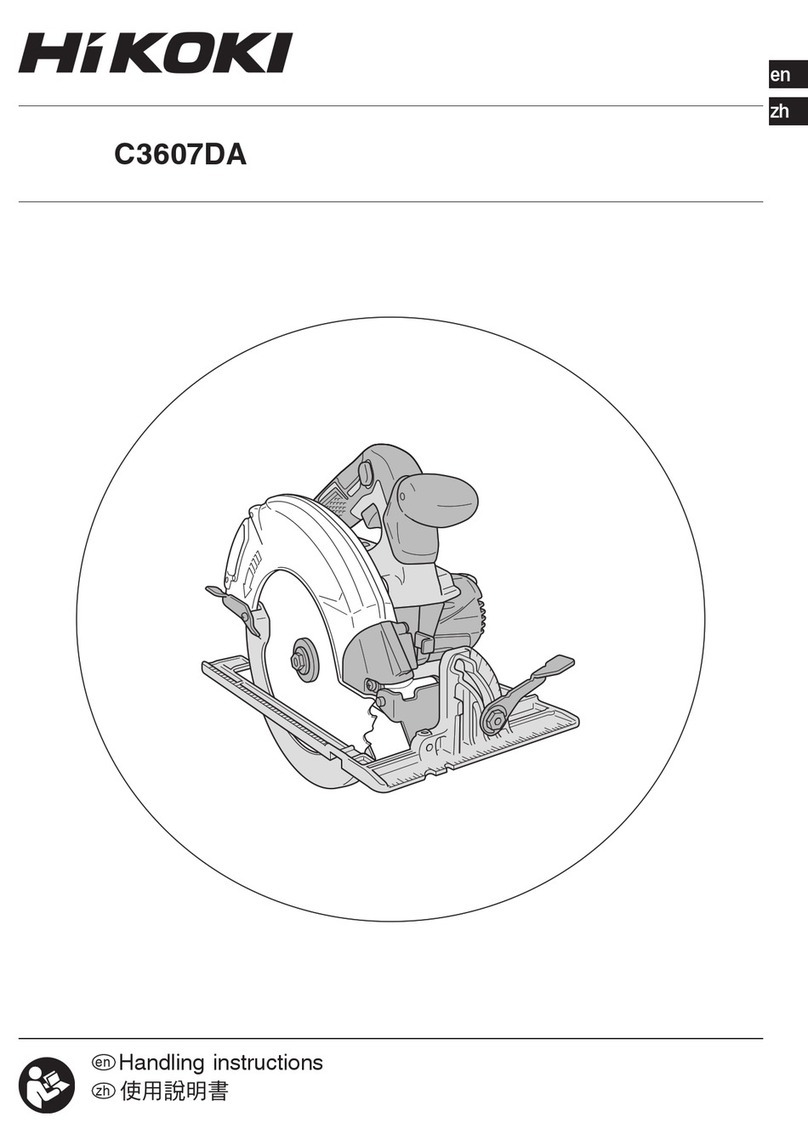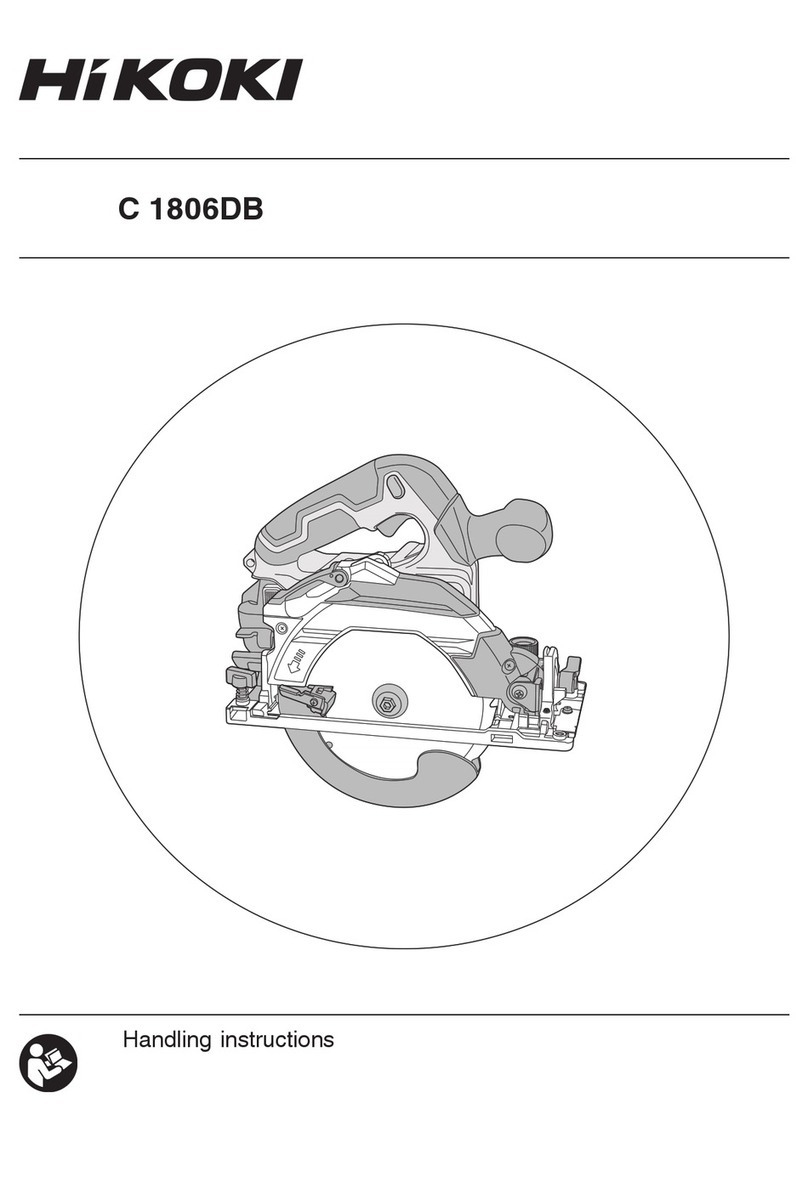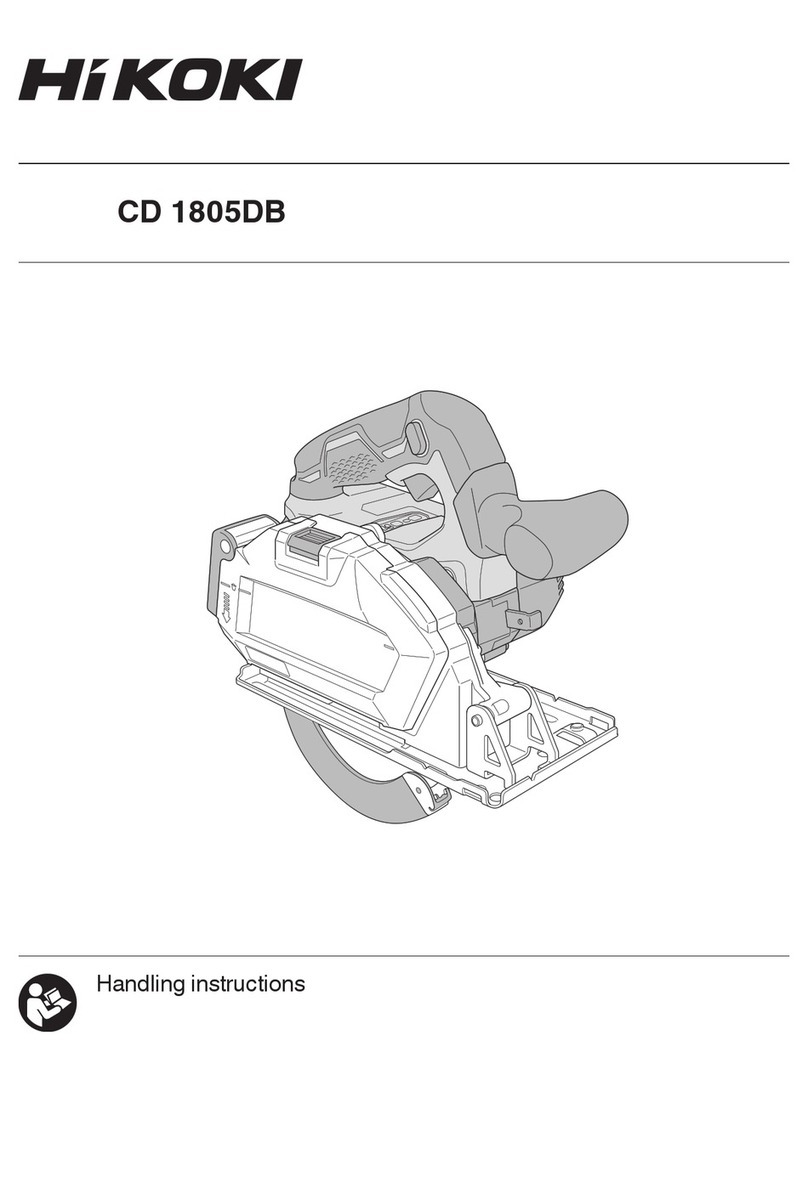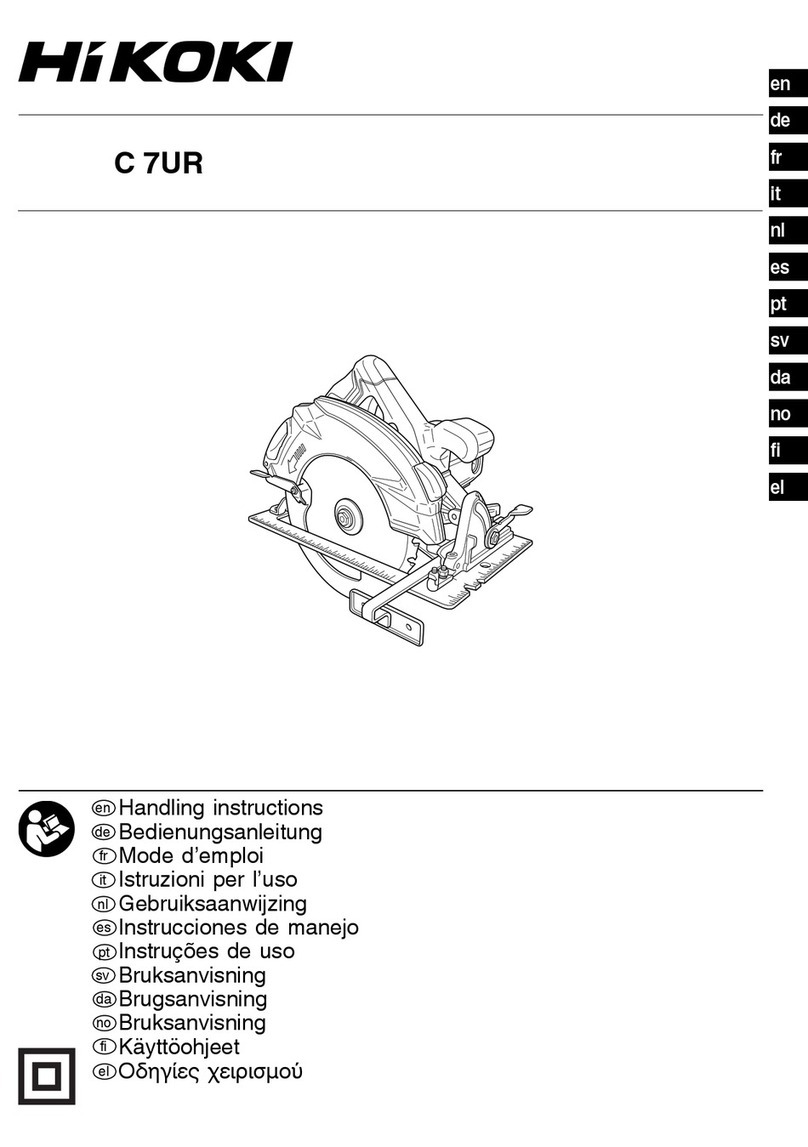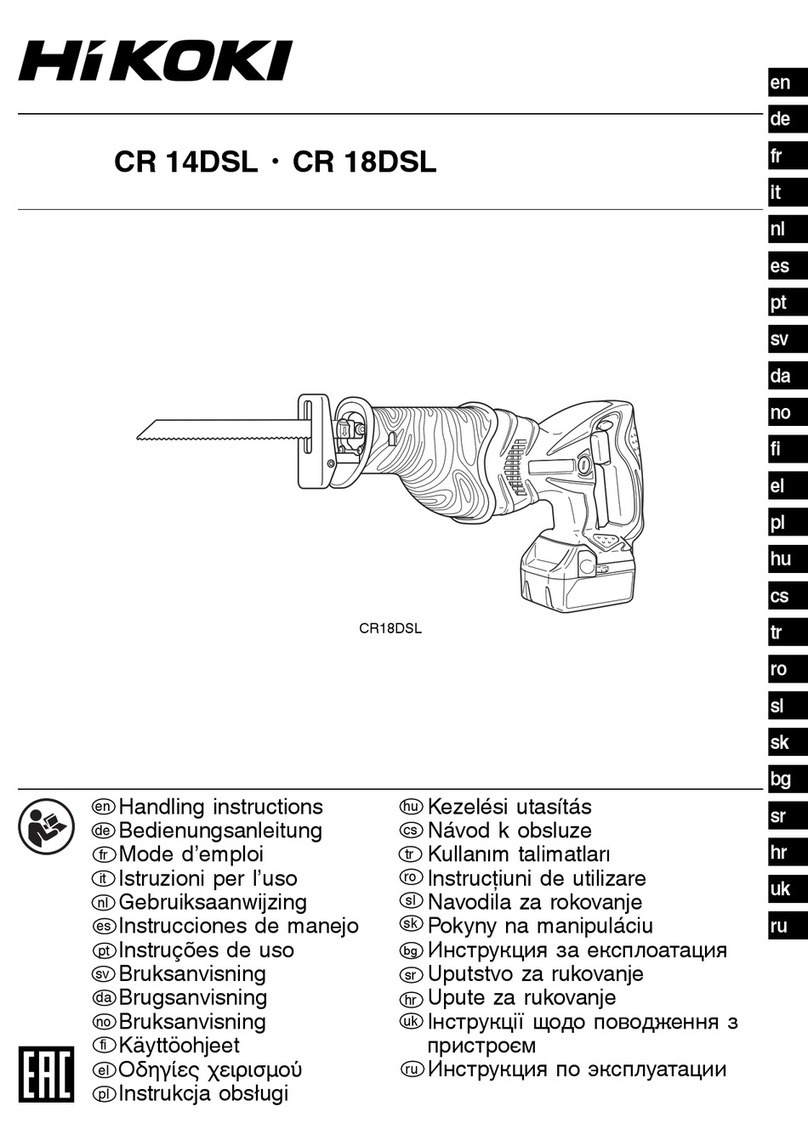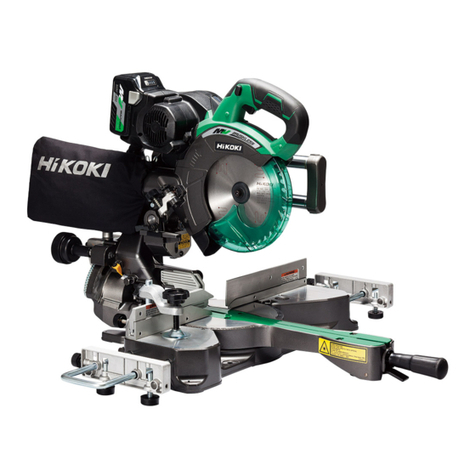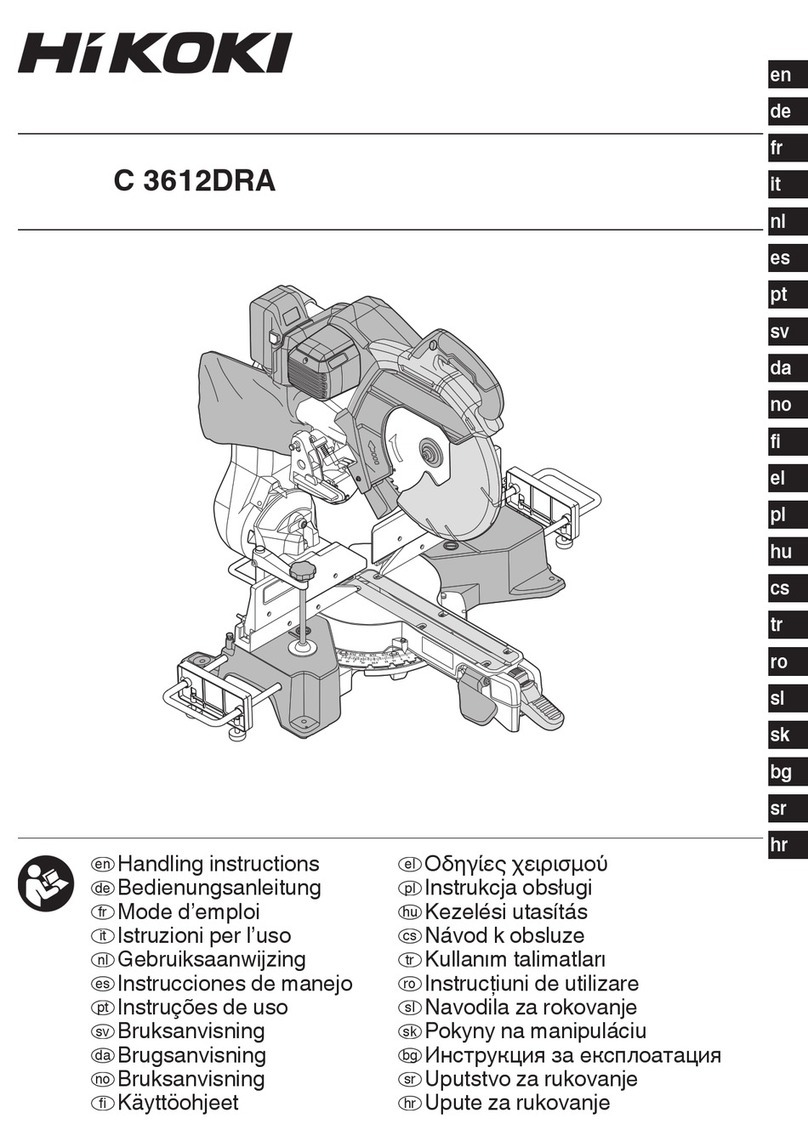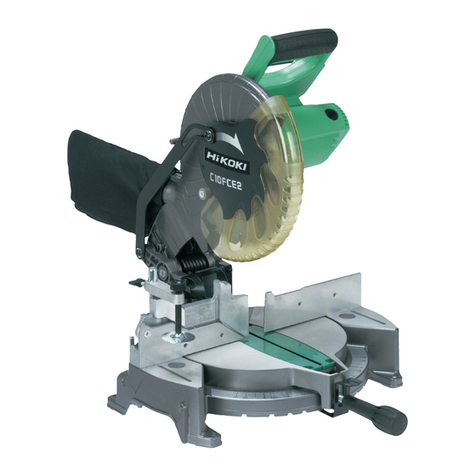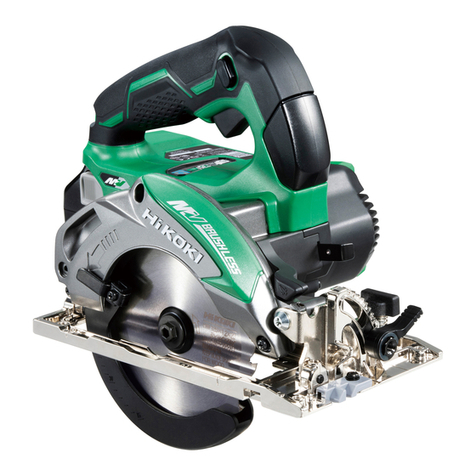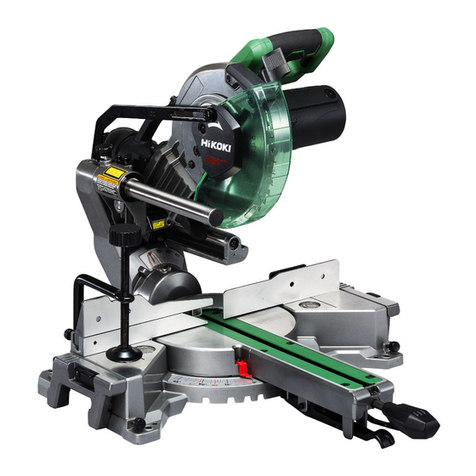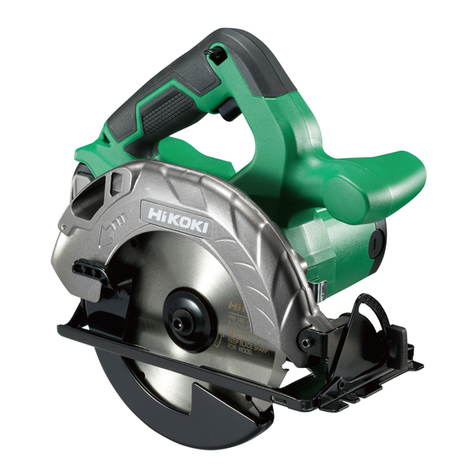
5
English
1) Guarding related warnings
a) Keep guards in place. Guards must be in working order and be properly mounted. A guard that is loose, damaged, or is
not functioning correctly must be repaired or replaced.
b) Always use saw blade guard, riving knife and anti-kickback pawls for every through–cutting operation. For through-cutting
operations where the saw blade cuts completely through the thickness of the workpiece, the guard and other safety devices help
reduce the risk of injury.
c) Immediately reattach the guarding system after completing an operation (such as rabbeting) which requires removal
of the guard, riving knife and/or anti-kickback pawls. The guard, riving knife, and anti-kickback pawls help to reduce the risk
of injury.
d) Make sure the saw blade is not contacting the guard, riving knife or the workpiece before the switch is turned
on. Inadvertent contact of these items with the saw blade could cause a hazardous condition.
e) Adjust the riving knife as described in this instruction manual. Incorrect spacing, positioning and alignment can make the
riving knife ineffective in reducing the likelihood of kickback.
f) For the riving knife and anti-kickback pawls to work, they must be engaged in the workpiece. The riving knife and anti-
kickback pawls are ineffective when cutting workpieces that are too short to be engaged with the riving knife and anti-kickback
pawls. Under these conditions a kickback cannot be prevented by the riving knife and anti-kickback pawls.
g) Use the appropriate saw blade for the riving knife. For the riving knife to function properly, the saw blade diameter must match
the appropriate riving knife and the body of the saw blade must be thinner than the thickness of the riving knife and the cutting
width of the saw blade must be wider than the thickness of the riving knife.
2. Safety instructions for sawing procedures
a) DANGER: Never place your fingers or hands in the vicinity or in line with the saw blade. A moment of inattention or a
slip could direct your hand towards the saw blade and result in serious personal injury.
b) Feed the workpiece into the saw blade only against the direction of rotation. Feeding the workpiece in the same direction
that the saw blade is rotating above the table may result in the workpiece, and your hand, being pulled into the saw blade.
c) Never use the mitre gauge to feed the workpiece when ripping and do not use the rip fence as a length stop when cross
cutting with the mitre gauge. Guiding the workpiece with the rip fence and the mitre gauge at the same time increases
the likelihood of saw blade binding and kickback.
d) When ripping, always apply the workpiece feeding force between the fence and the saw blade. Use a push stick when
the distance between the fence and the saw blade is less than 150 mm, and use a push block when this distance is less
than 50 mm. Work helping” devices will keep your hand at a safe distance from the saw blade.
e) Use only the push stick provided by the manufacturer or constructed in accordance with the instructions. The push stick
provides sufficient distance of the hand from the saw blade.
f) Never use a damaged or cut push stick. A damaged push stick may break causing your hand to slip into the saw blade.
g) Do not perform any operation"freehand". Always use either the rip fence or the mitre gauge to position and guide the
workpiece. "Freehand" means using your hands to support or guide the workpiece, in lieu of a rip fence or mitre gauge. Freehand
sawing leads to misalignment, binding and kickback.
h) Never reach around or over a rotating saw blade. Reaching for a workpiece may lead to accidental contact with the moving
saw blade.
i) Provide auxiliary workpiece support to the rear and/or sides of the saw table for long and/or wide workpieces to keep
them level. A long and/or wide workpiece has a tendency to pivot on the table’s edge, causing loss of control, saw blade binding
and kickback.
j) Feed workpiece at an even pace. Do not bend or twist the workpiece. If jamming occurs, turn the tool off immediately,
unplug the tool then clear the jam. Jamming the saw blade by the workpiece can cause kickback or stall the motor.
k) Do not remove piece of cut-off material while the saw is running. The material may become trapped between the fence or
inside the saw blade guard and the saw blade pulling your fingers into the saw blade. Turn the saw off and wait until the saw blade
stops before removing material.
I) Use an auxiliary fence in contact with the table top when ripping workpieces less than 2 mm thick. A thin workpiece may
wedge under the rip fence and create a kickback.
3. Kickback causes and related warnings
Kickback is a sudden reaction of the workpiece due to a pinched, jammed saw blade or misaligned line of cut in the workpiece with
respect to the saw blade or when a part of the workpiece binds between the saw blade and the rip fence or other fixed object.
Most frequently during kickback, the workpiece is lifted from the table by the rear portion of the saw blade and is propelled towards the
Safety instructions for table saw
c) When battery pack is not in use, keep it away from other metal objects, like paper clips, coins, keys, nails, screws or
other small metal objects, that can make a connection from one terminal to another. Shorting the battery terminals together
may cause burns or a fire.
d) Under abusive conditions, liquid may be ejected from the battery; avoid contact. If contact accidentally occurs, flush
with water. If liquid contacts eyes, additionally seek medical help. Liquid ejected from the battery may cause irritation or
burns.
e) Do not use a battery pack or tool that is damaged or modified. Damaged or modified batteries may exhibit unpredictable
behaviour resulting in fire, explosion or risk of injury.
f) Do not expose a battery pack or tool to fire or excessive temperature. Exposure to fire or temperature above 130°C may
cause explosion.
g) Follow all charging instructions and do not charge the battery pack or tool outside the temperature range specified in
the instructions. Charging improperly or at temperatures outside the specified range may damage the battery and increase the
risk of fire.
6) Service
a) Have your power tool serviced by a qualified repair person using only identical replacement parts. This will ensure that
the safety of the power tool is maintained.
b) Never service damaged battery packs. Service of battery packs should only be performed by the manufacturer or authorized
service providers.

